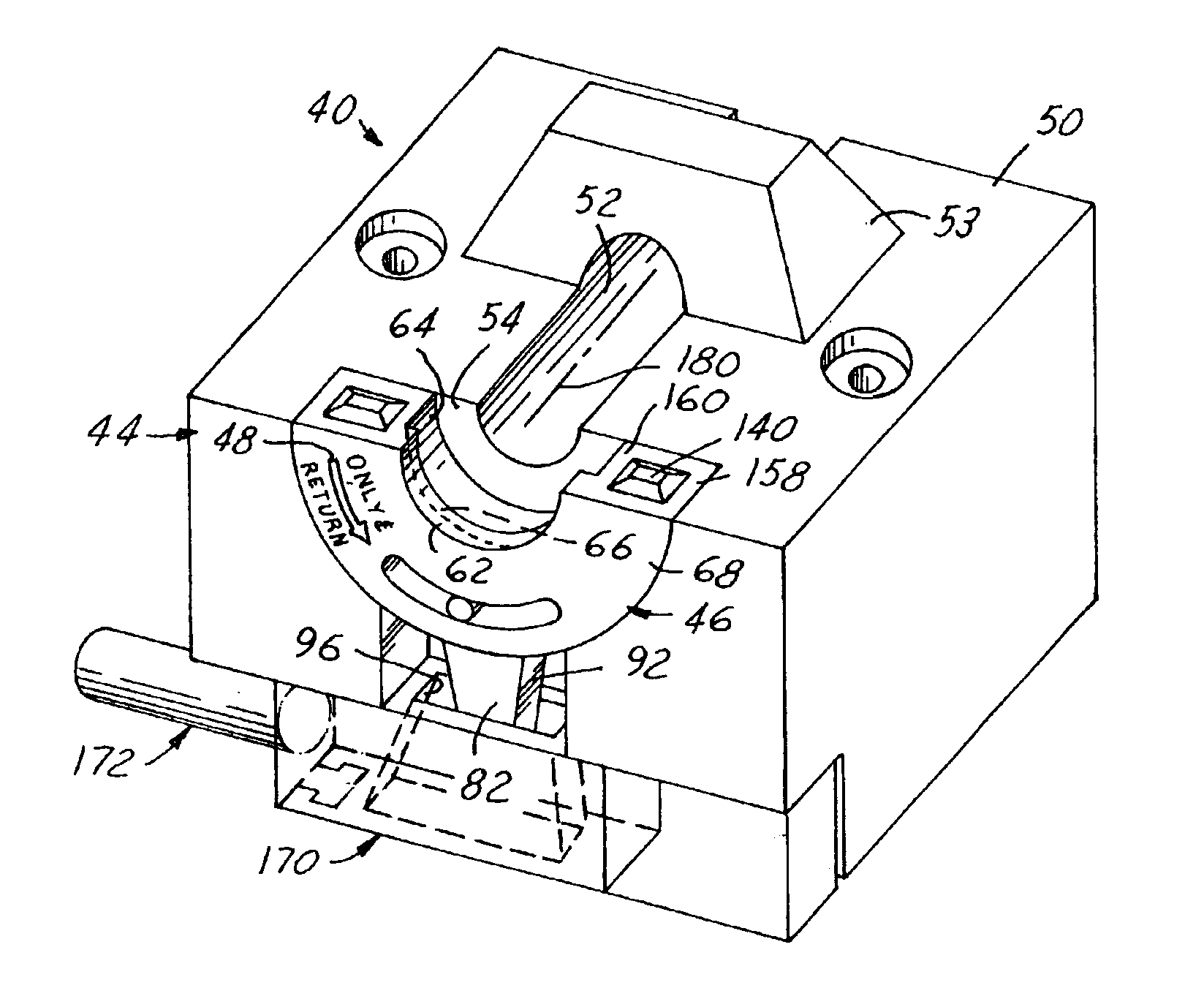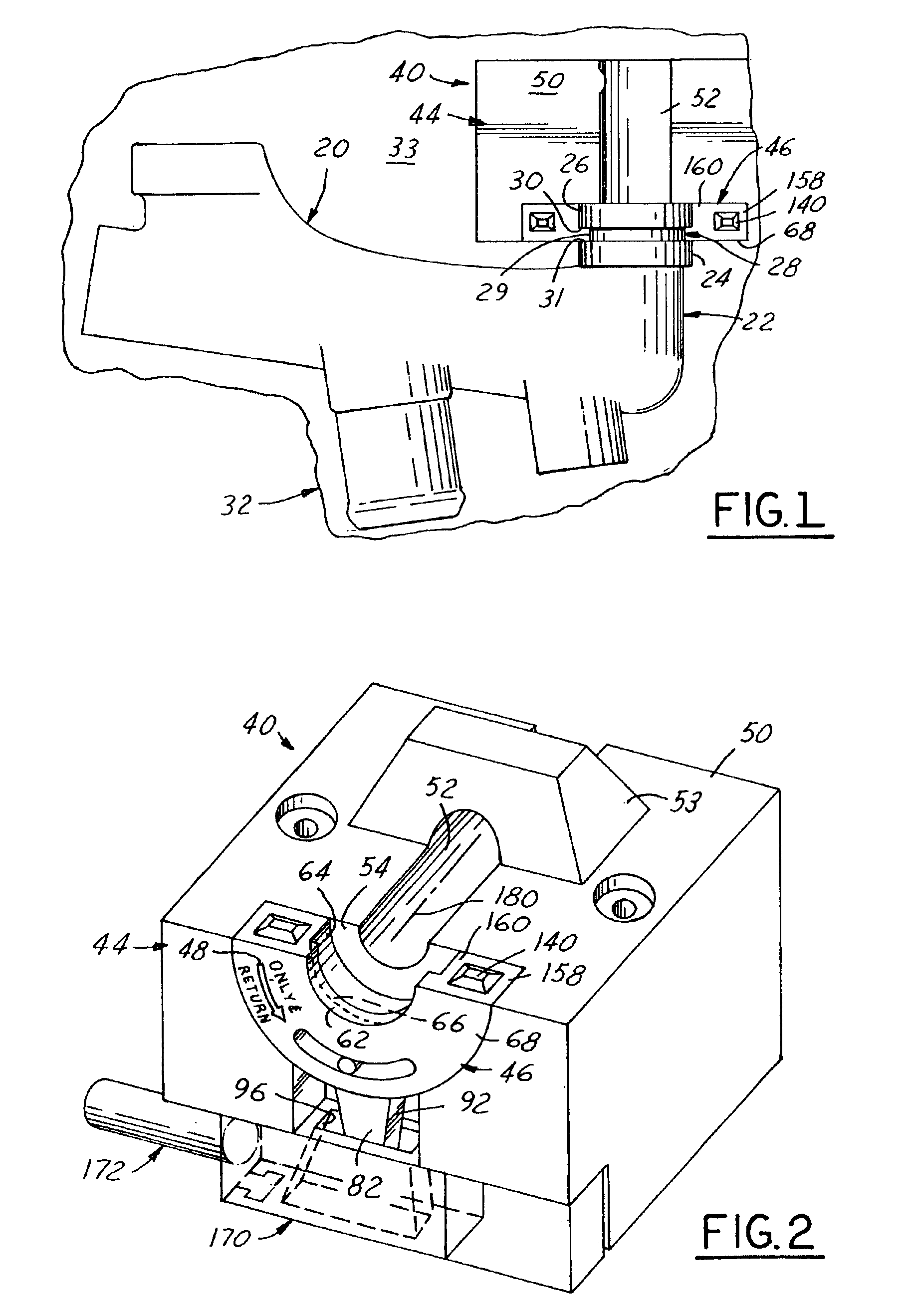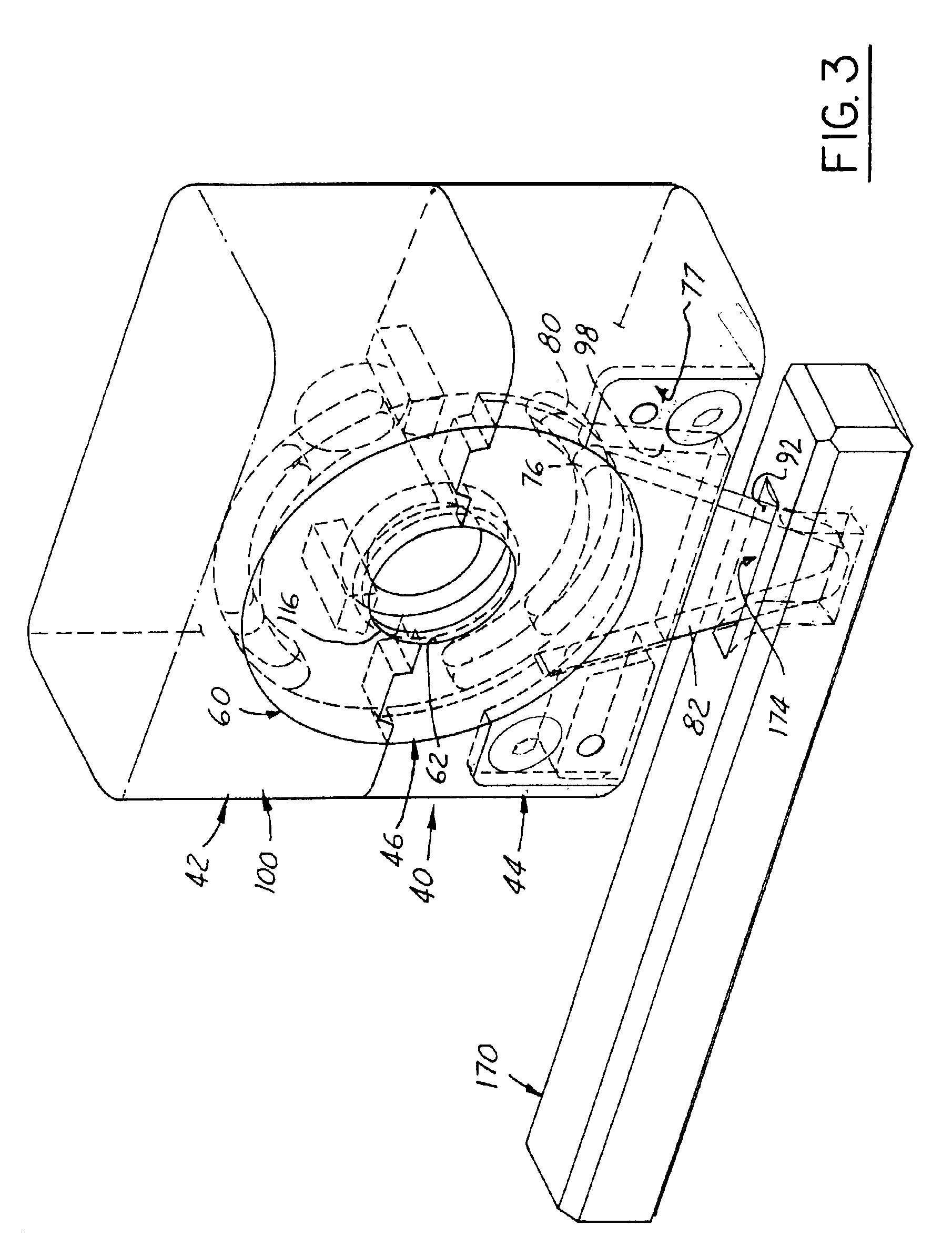Method and apparatus for eliminating a parting line witness mark from a molded part
a witness mark and molded part technology, applied in the direction of turning apparatus, molds, food shaping, etc., can solve the problems of increasing mold maintenance costs, unavoidable events, and increasing the cost of molds
- Summary
- Abstract
- Description
- Claims
- Application Information
AI Technical Summary
Benefits of technology
Problems solved by technology
Method used
Image
Examples
Embodiment Construction
[0031]Referring in more detail to the accompanying drawings, FIG. 1 illustrates the improved method and apparatus of the invention in one preferred but exemplary first embodiment employed in the plastic injection molding of an automotive engine cooling system conduit 20. One elbow 22 of conduit 20 terminates in a pair of axially spaced apart cylindrical ribs 24 and 26 defining therebetween an external groove 28 dimensioned and configured as a sealing surface of revolution for receiving an annular O-ring seal therein (not shown) for providing a liquid-tight seal when the ribs 24, 26 are inserted into the bore of an associated engine block coolant port (not shown).
[0032]O-ring groove 28 thus has, in the illustrated exemplary embodiment, a cylindrical bottom wall 29 flanked by two radially extending sidewalls 30 and 31 to thereby form an external square-cut type sealing groove. In operative assembly, the O-ring (not shown) is designed to fit relatively snuggly in sealing groove 28 in i...
PUM
| Property | Measurement | Unit |
|---|---|---|
| acute angle | aaaaa | aaaaa |
| solidification strength | aaaaa | aaaaa |
| internal diameter | aaaaa | aaaaa |
Abstract
Description
Claims
Application Information
 Login to View More
Login to View More - R&D
- Intellectual Property
- Life Sciences
- Materials
- Tech Scout
- Unparalleled Data Quality
- Higher Quality Content
- 60% Fewer Hallucinations
Browse by: Latest US Patents, China's latest patents, Technical Efficacy Thesaurus, Application Domain, Technology Topic, Popular Technical Reports.
© 2025 PatSnap. All rights reserved.Legal|Privacy policy|Modern Slavery Act Transparency Statement|Sitemap|About US| Contact US: help@patsnap.com



